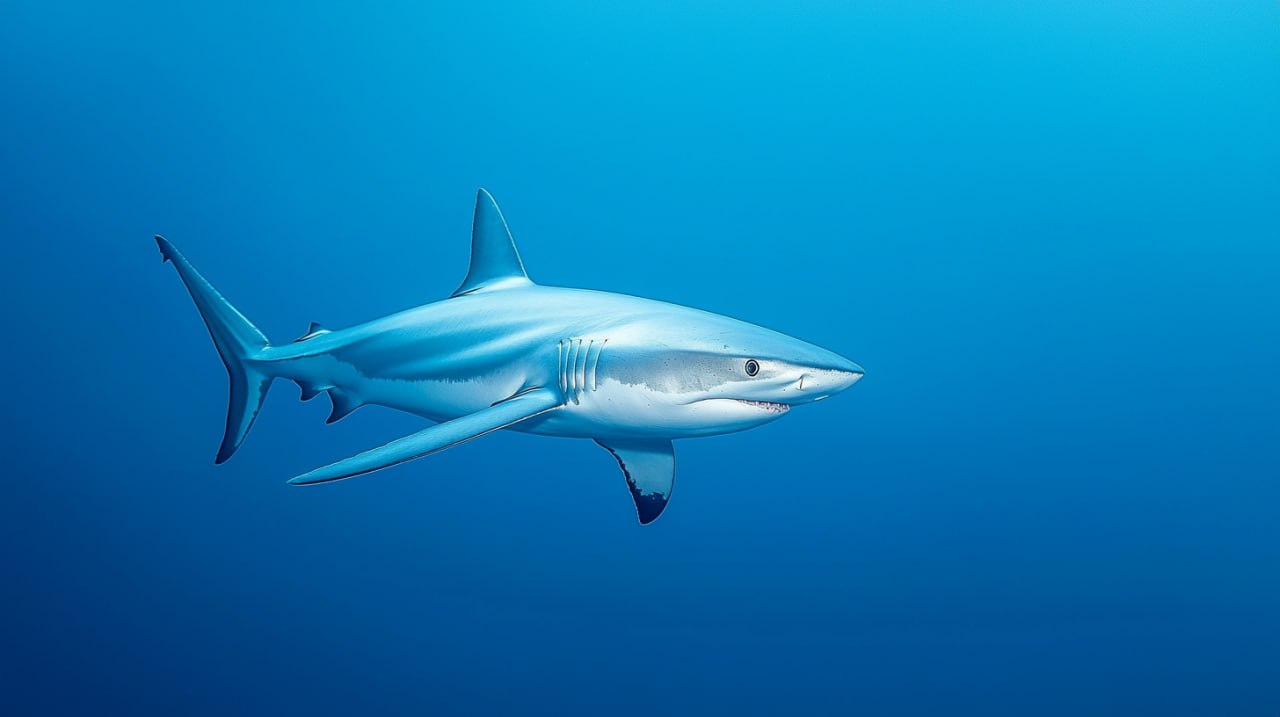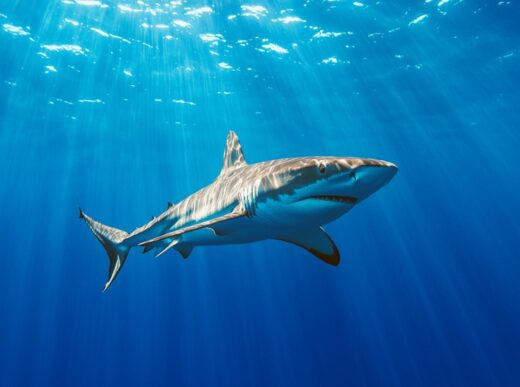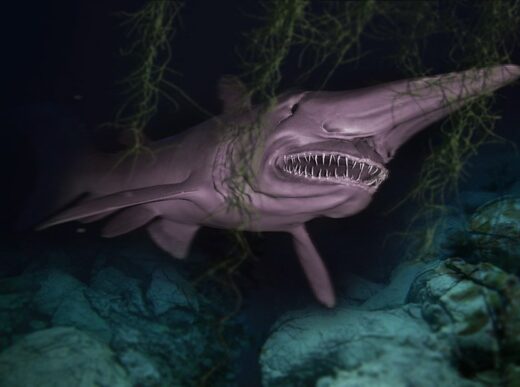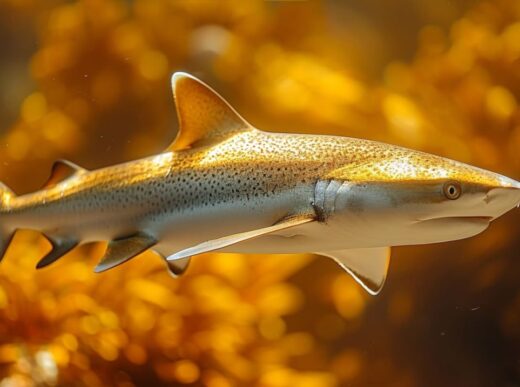Dive into the ocean’s depths with us as we uncover the intriguing world of Porbeagle sharks! These fascinating and formidable fish bring a mix of danger and playfulness to the ocean. We’ve put together 20 fun and fascinating facts that will give you a fresh perspective on Porbeagle sharks. Join us on this underwater adventure as we dive into the mysteries of these curious and captivating ocean dwellers!
20 Amazing Facts About Porbeagle Sharks
Get ready for an exciting plunge into the mesmerizing world of sharks, where they rule the ocean depths with majesty and grace!
Characteristics
1. Let’s kick things off with the most crucial part! The porbeagle shark family only has five species left these days, but there used to be more than two dozen. Sadly, many of these stunning fish are now extinct.
2. The most commonly known porbeagle shark is the Atlantic shark, also called the common herring shark or llama.
3. Scientists stick to Latin when naming sharks. In their books, the porbeagle shark goes by the name Lamna nasus, which means «Flat-nosed.»
4. The porbeagle shark boasts a dense, robust spindle-shaped body that ends with a pointed snout and a slightly upturned nose. This distinct feature inspired its Latin name.
5. These sharks can get pretty big, growing up to 3 meters long and weighing up to 130 kilograms. Fun fact: the ones living in the northern Atlantic tend to be larger than their southern counterparts.
6. Porbeagle sharks have been around for ages—about 50 million years, to be exact! The oldest remains of these sharks date back around 7 million years. Talk about ancient history!
Habitats
7. Porbeagle sharks hang out in the North and South Atlantic, the southern Indian Ocean, and the Pacific Ocean. You’ll mostly find them swimming along the coasts of the United States and Western Europe.
8. Even though porbeagle sharks live in different oceans and belong to different species, they look quite similar. Their differences are pretty subtle, so let’s focus on the Atlantic porbeagle shark for now.
Lifestyle
9. The porbeagle shark is known for being a fast and formidable predator. They tend to avoid the mainland, hanging out around shallow banks, which are plentiful in the open sea.
10. While they enjoy shallower waters, these sharks can also dive down to depths of up to 1,300 meters. You’ll find them near the coast too, but that’s a different story for another time!
Eating Habits
11. Ever wonder why they call it the porbeagle shark? The answer is pretty straightforward: herring is its go-to meal! This shark also enjoys other small fish like mackerel, sardines, and saury.
12. Squid have a good chance of ending up on a porbeagle shark’s dinner plate too. Surprisingly, these sharks might even munch on krill and seaweed. Talk about a varied diet!
Intelligence and Social Behavior
13. You might be amazed to learn that the porbeagle shark is one of the few fish known for its playful behavior! These sharks love to jump out of the water, spin around, and interact with other sharks. It’s not unusual to see them hanging out in packs, having a good time together.
Reproduction
14. It seems that porbeagle sharks are egg-laying. Their pups hatch from eggs inside the womb when they reach about 3–4 centimeters in size. By the time they’re actually born, they’re around 60 centimeters long!
15. Porbeagle shark pregnancies last about 8–9 months, similar to humans. When it’s time to give birth, females distance themselves from males and dive down to 600 meters deep. This is their way of protecting their young and giving them a better start in life.
Population
16. So, why don’t porbeagle sharks hang out near the coast much anymore? In the past, they were heavily fished for their delicious meat, which caused their population to plummet. Nowadays, all species in this family are considered vulnerable and endangered.
Danger To Humans
17. You might have guessed that porbeagle sharks can be a bit risky for humans, mainly because of their size. Luckily, attacks by these sharks are pretty rare, mostly due to their preference for the open sea.
18. There was a documented case of a porbeagle shark taking a bite at a diver working near an oil platform. Fortunately, the shark couldn’t damage the diver’s suit—or maybe it just decided against it!
Are There Any Aquariums with Porbeagle Sharks?
19. Good news for shark lovers! You can spot porbeagle sharks fairly easily in the sea, often in shallower waters or around underwater structures. That’s where sport fishers gather to catch them. You’ll frequently find porbeagle sharks off the coasts of Canada, the United States, and Ireland.
20. Even better news: porbeagle sharks can adapt to captivity, and you can see them in some oceanariums. So, if you’re curious about these creatures, check out your local aquarium!
You can see the porbeagle shark at oceanariums:
The availability of specific shark species, such as the porbeagle shark, in aquariums can vary depending on the aquarium’s focus, location, and collection. This species of shark is found in temperate waters and can be challenging to maintain in captivity due to its size and specific habitat needs.
Therefore, it’s advisable to check with each specific aquarium directly to confirm the presence of porbeagle sharks in their exhibits:
- Acquario di Genova (Aquarium of Genoa), Italy:
- Location: Ponte Spinola, Area Porto Antico, 16128 Genova GE, Italy
- Website:Acquario di Genova
- Shanghai Ocean Aquarium, China:
- Location: No. 1388 Lujiazui Ring Road, Pudong New Area, Shanghai, China
- Website:Shanghai Ocean Aquarium
- National Aquarium, Baltimore, USA:
- Location: 501 E Pratt St, Baltimore, MD 21202, USA
- Website:National Aquarium
- Oceanogràfic València, Spain:
- Location: Carrer d’Eduardo Primo Yúfera, 1B, 46013 València, Spain
- Website:Oceanogràfic València
To confirm whether these aquariums currently have porbeagle sharks on exhibit, I recommend checking their websites or contacting them directly. They may be able to provide more specific information on their collections and any ongoing changes in their exhibits.




